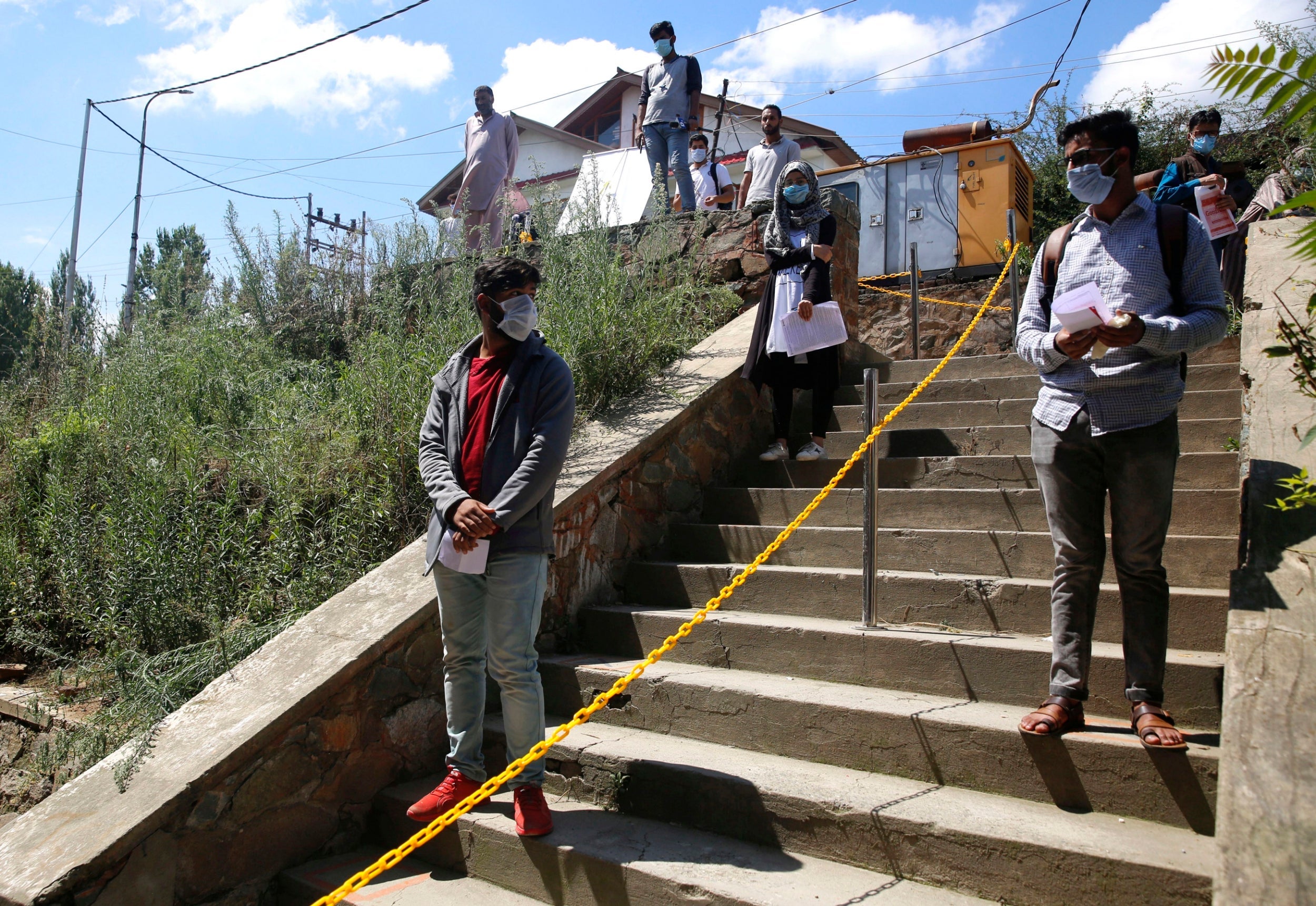India records highest number of cases globally in August – but continues to lift lockdown
WHO says country has single-handedly raised the global Covid-19 caseload by 1 per cent in the past week – yet metro services are reopening and key national exams are going ahead, as Adam Withnall explains


India continued to ease lockdown restrictions on Tuesday, opening up businesses and transport links and reducing red tape on inter-state travel – at the end of a month that has seen it report the highest number of coronavirus cases anywhere in the world.
The nearly 2 million infections recorded by the health ministry in August takes its total up to 3.7 million, and eclipses even the highest monthly figures set by the worst-affected US and Brazil.
Experts have said India will ultimately overtake both those countries to have the world’s highest caseload. It added an average of 64,000 cases a day in August, setting a global single-day record of 78,761 new cases on Sunday, although the figure was slightly down to 69,921 on Tuesday.
India enforced one of the world’s strictest and earliest national lockdowns back in March, with measures that kept the virus at bay but also hammered the economy. On Monday, the Modi administration said GDP contracted by 23.9 per cent in the quarter to June, its worst slump for at least 24 years, and millions have lost their jobs.
Both state and central governments have since prioritised getting the economy going over containing the virus, but the health ministry has said this approach is justified by high rates of recovery – around 76 per cent of cases so far – and low fatalities: 65,000 people have died, less than 2 per cent of confirmed cases.
And so key college exams got under way on Tuesday across the country, despite protests from students who said it was putting their lives at risk.
Politicians from across the political spectrum had called it a “giant mistake”, subjecting pupils to “a grave health risk”. But after putting the exams off twice, the authorities said there were enough social distancing, hand sanitising and temperature-checking measures in place for them to go ahead.
Most of India’s cases have been in western Maharashtra state and the four southern states of Tamil Nadu, Andhra Pradesh, Telangana and Karnataka. In Karnataka’s capital, Bengaluru, pubs were permitted to reopen and start serving alcohol on Tuesday after a dry six months, which came after the state added another 8,800 cases, taking its total to more than 342,000.
And from next Monday, metro services will be allowed to resume in big cities including Mumbai, the capital of Maharashtra state, which has seen almost 800,000 cases in total.
With its densely populated urban areas and chronically underfunded health system, epidemiologists have long warned India was likely to struggle to contain the virus.
“This was to be expected,” Dr Gagandeep Kang, an infectious diseases expert at the Christian Medical College at Vellore in southern India, said. “It was inevitable that the numbers would climb.”
India is seeing high numbers despite relatively low rates of testing. Government facilities will refuse to test people unless they are showing symptoms and have a referral from a doctor, and private testing services are prohibitively expensive. The testing rate has improved but still stands at around 32,000 per million, far lower than in the US.
The WHO also highlighted India in its weekly report on Tuesday. Its half a million fresh infections in the past seven days was higher than any other country, the organisation said, and on its own pushed up the global number of cases by 1 per cent.
Join our commenting forum
Join thought-provoking conversations, follow other Independent readers and see their replies
Comments